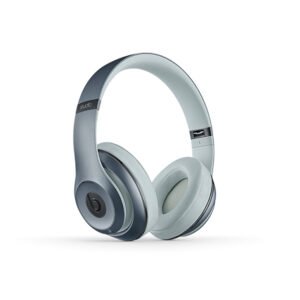Selecting your first Digital Audio Workstation (DAW) is an exciting step in your music production journey. A DAW is software that means that you can record, edit, and produce audio files. It’s the central hub for creating music, whether you’re composing, mixing, or mastering. With so many options available, selecting the proper one might be overwhelming, particularly for beginners. This guide aims to simplify the process by highlighting key factors to consider when selecting your first DAW.
1. Define Your Goals and Needs
Before diving into the specifics of various DAWs, it’s crucial to understand your own goals and needs. Are you interested in producing electronic music, recording live instruments, or maybe a bit of each? The type of music you want to create will influence the options you need. For example, in the event you’re targeted on electronic music, you might prioritize DAWs with sturdy MIDI help and virtual instruments. Conversely, should you’re recording live bands, you will want wonderful audio recording and editing capabilities.
2. Consider Your Budget
DAWs range from free to a number of hundred dollars. While it’s tempting to start with a free option, investing in a paid DAW can typically provide higher options, support, and long-term value. That said, there are excellent free or budget-friendly DAWs like Audacity, Cakewalk by BandLab, and Tracktion T7 that can be excellent for beginners. If you happen to select a paid DAW, consider whether it affords a trial interval, which allows you to test its features earlier than committing financially.
3. Consider the User Interface and Learning Curve
A DAW’s user interface (UI) can significantly impact your workflow. Some DAWs have a steeper learning curve due to their advanced UIs, while others are more intuitive. Newcomers usually benefit from a easy, clean interface that does not overwhelm them with too many options at once. DAWs like Ableton Live and FL Studio are praised for their consumer-friendly design, making them popular selections for beginners. It’s advisable to look at tutorial videos or attempt demo versions to see which UI feels most comfortable.
4. Check for Compatibility and System Requirements
Earlier than buying or downloading a DAW, ensure that it’s suitable with your pc’s operating system and hardware. Some DAWs are platform-specific; for instance, Logic Pro is only available for macOS, while FL Studio is available for both macOS and Windows. Additionally, DAWs will be resource-intensive, so check the system requirements to make sure your pc can handle the software smoothly. This contains enough RAM, CPU power, and storage space.
5. Look at Included Instruments and Effects
The built-in instruments and effects is usually a main deciding factor. These tools are crucial for sound design, mixing, and mastering. For example, DAWs like Reason and Logic Pro X come with extensive libraries of virtual instruments and effects, making them ideally suited for those who want a wide range of sounds without additional purchases. However, some DAWs like Pro Tools focus more on recording and editing, with fewer included instruments.
6. Community and Assist
A strong community and good customer assist can make an enormous distinction, especially for beginners. A DAW with an active consumer community provides access to tutorials, forums, and third-party plugins, which might be invaluable learning resources. Common DAWs like Ableton Live, FL Studio, and Pro Tools have intensive online communities and numerous academic resources, making them nice for newcomers who might have additional help.
7. Future-Proofing and Scalability
Lastly, consider the longer term-proofing and scalability of the DAW. As you develop as a producer, your needs will evolve. A DAW that allows for enlargement, whether through third-party plugins, additional hardware, or more advanced features, will save you from needing to switch software later. DAWs like Ableton Live and Cubase supply numerous versions catering to totally different levels of users, which can be upgraded as your skills and needs grow.
Conclusion
Selecting your first DAW is a personal choice that is dependent upon your musical goals, budget, and workflow preferences. By considering these factors and taking advantage of trial versions, you can find a DAW that not only meets your current needs but in addition grows with you as you progress in your music production journey. Bear in mind, the best DAW is the one which inspires you to create and makes your production process enjoyable and efficient.
If you have any sort of inquiries relating to where and how to use free beatmaker, you could call us at the internet site.
















